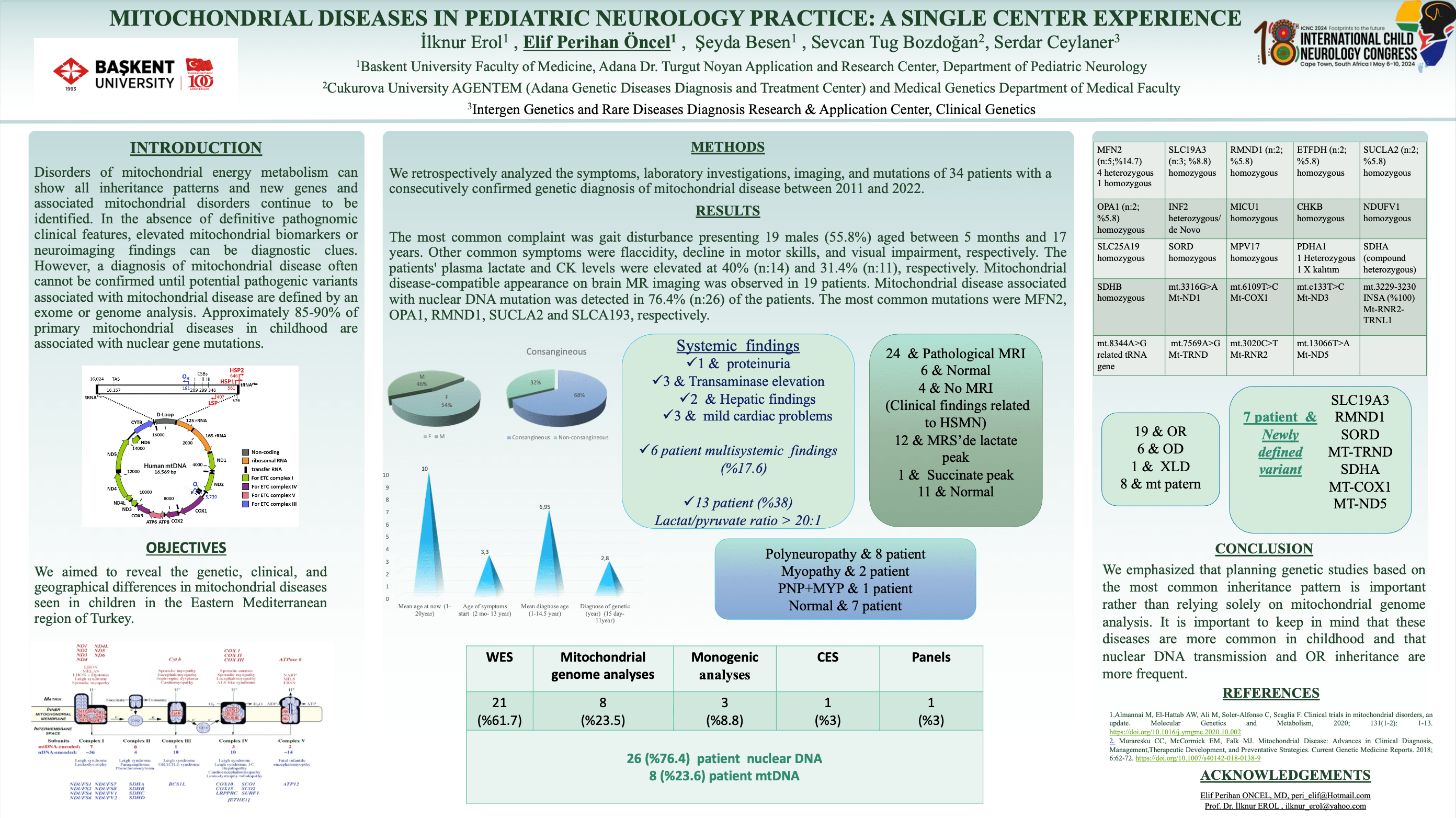Mitochondrial Diseases In Pediatric Neurology Practice: A Single Center Experience
Objectives: Disorders of mitochondrial energy metabolism can show all inheritance patterns and new genes and associated mitochondrial disorders continue to be identified. In the absence of definitive pathognomic clinical features, elevated mitochondrial biomarkers or neuroimaging findings can be diagnostic clues. However, a diagnosis of mitochondrial disease often cannot be confirmed until potential pathogenic variants associated with mitochondrial disease are defined by an exome or genome analysis. Approximately 85-90% of primary mitochondrial diseases in childhood are associated with nuclear gene mutations. This study aimed to evaluate the genotype-phenotype correlation in childhood mitochondrial diseases in our region.
Methods: We retrospectively analyzed the symptoms, laboratory investigations, imaging, and mutations of 34 patients with a consecutively confirmed genetic diagnosis of mitochondrial disease between 2011 and 2022.
Results: The most common complaint was gait disturbance presenting 19 males (55.8%) aged between 5 months and 17 years. Other common symptoms were flaccidity, decline in motor skills, and visual impairment, respectively. The patients' plasma lactate and CK levels were elevated at 40% (n:14) and 31.4% (n:11), respectively. Mitochondrial disease-compatible appearance on brain MR imaging was observed in 19 patients. Mitochondrial disease associated with nuclear DNA mutation was detected in 76.4% (n:26) of the patients. The most common mutations were MFN2, OPA1, RMND1, SUCLA2 and SLCA193, respectively.
Conclusion: We aimed to reveal the genetic, clinical and geographical differences in mitochondrial diseases seen in children in the Eastern Mediterranean region of Turkey.
İlknur EROL
Baskent University Faculty of Medicine, Adana Dr. Turgut Noyan Application and Research Center, Department of Pediatric Neurology
Department of Pediatric Neurology
Adana, Turkey
Elif Perihan ONCEL
Child Neurologist, Dr.
Baskent University Faculty of Medicine, Adana Dr. Turgut Noyan Application and Research Center, Department of Pediatric Neurology
Department of Pediatric Neurology
Adana Turkey
Şeyda BESEN
Baskent University Faculty of Medicine, Adana Dr. Turgut Noyan Application and Research Center, Department of Pediatric Neurology
Department of Pediatric Neurology
Adana Turkey
Serdar CEYLANER
Clinical Genetics Unit
Intergen Genetics and Rare Diseases Diagnosis Research & Application Center, Clinical Genetics Unit
Ankara, Turkey
Sevcan TUG BOZDOGAN
Medical Genetics Department of Medical Faculty
Cukurova University AGENTEM (Adana Genetic Diseases Diagnosis and Treatment Center) and Medical Genetics Department of Medical Faculty

Adam Numis
University of California, San Francisco; UCSF Benioff Children's Hospital
United States